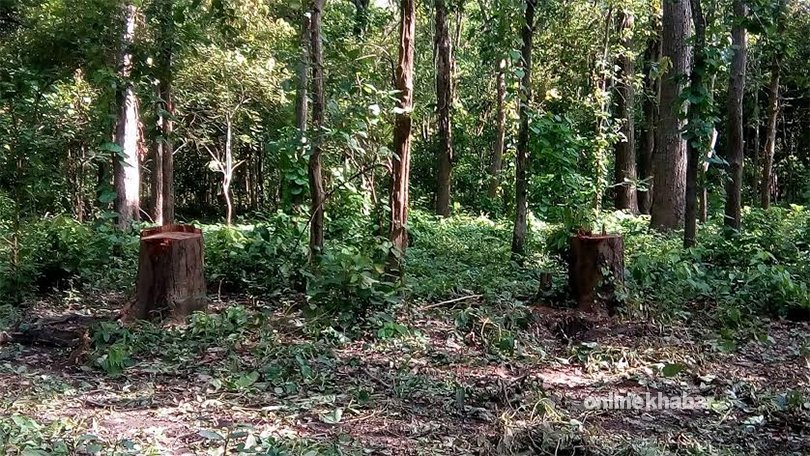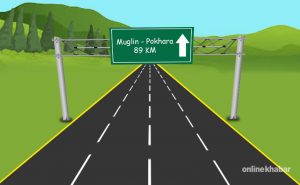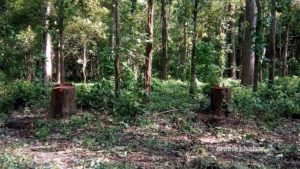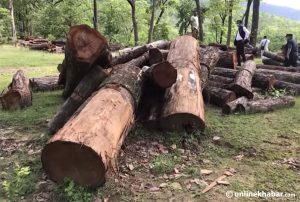
It seems the controversy surrounding ‘scientific forest management’ is currently at its peak in Nepal. This reveals a fundamental contradiction that exists between the historically entrenched techno-bureaucratic power and the recent emergence of the community right movement in the forest sector.
With over 40% of land area under state ownership, and with a long history of state-centric forest governance, this contradiction appears as an important opportunity to deepen democratic forest governance in Nepal. Forest ecosystems are complex and vital for livelihoods, biodiversity, and climate resilience, and managing these systems requires a robust and comprehensive approach to public policy governance innovation.
Recognising the gravity of the issue, the government and the parliament have both instituted commissions to review the situation and explore ways for improvement. However, how a forest is managed is less important than the question of who should take control of the decision-making process. The debate needs to shift from whether to adopt ‘scientific forest management’ to how to deepen ‘democratic forest governance’.
My story
In the early 1990s, I spent a couple of years working as a government forester in the district of Dhankuta. One of my key responsibilities was to advise local communities on technical and institutional aspects of forest management. One of the communities near Hile Bazaar had a small forest patch of alder (uttis in Nepali). It was a plantation of about 10 years of age at that time and the trees were at the pole stage of growth. The day I visited was a lovely sunny day in the winter. I was received well by the community. I had to present myself as a technical expert as well as a government regulator; I was excited about that.
Together with several community leaders, I walked around the forest and prepared a participatory map. We located forest patches, creeks, aspects and exposure, other vegetation types, slopes, and places prone to soil erosion. One thing that caught my attention was that the pole-size trees were too dense. Finally, we sat on a small grassy patch inside the forest where sunlight penetrated through the forest canopy.

The chairperson asked, “How is our forest, sir”? I replied, “Your forest is too dense for these small trees to grow.” I pointed at the interlocking crowns of the trees on my left, and added, “Look, these trees are competing for light and space and unless we remove some of these, none will get enough food from the soil and light from the sun to grow into large trees. I am sure you want good timber, so I will suggest you cut several of these inferior trees and retain only the most promising ones. It is just like how you do godmel on your maize farm. This will give you a lot of good quality timber after some years.”
No one was excited to hear me. After looking at each other’s faces, one of the leaders reacted, “Well, you may be right, sir, but this advice does not work for us.” I asked why. The leader explained, “If we cut all of what can be removed now, we will have a problem of firewood in the years to come. We would like to ensure we have at least a few bharis (bundles) of firewood every year. We are not worried about the timber, but we need some trees left for us to harvest every year.”
I was perplexed to know the community’s strategy was different from what I had thought. I realised that I was thinking unilaterally about maximising timber output. They were thinking about how they can ensure a sustainable supply of firewood. I had assumed that firewood should have been a by-product in timber-focussed management.
Unscientific basis of ‘scientific forest management’
My story above illustrates a common gap between a technical mindset and a practical sense of the local people. In the forest sciences I studied in my university, we did talk about the option of fuelwood (and non-timber forest products)-oriented management too. This means the question is not whether forestry science can advise options other than timber-oriented management; more fundamentally, the question is how forest experts, communities, managers, and owners of forest resources interact and decide the course of forest management. If the underlying setting is politically imbalanced (as it is in Nepal), decisions and actions are likely to serve the interests of the powerful at the expense of others. In my case above, I did not impose my advice and invited the community to discuss and debate the options further. In the end, the matter was taken to my senior officer and he instructed me that we could not ignore timber production in that forest. Our techno-bureaucratic power dominated the community vision.

Whether it is community forestry, private forestry, or government forestry, the current political setting of planning and decision-making is more or less the same: techno-bureaucratic power dominates the scene. This historically entrenched power affects planning and decision-making. As a result, actual practices of forestry have been guided by the language, concepts and meanings of orthodox forestry science. Some even report that expert knowledge leads to colonisation of local knowledge. When scientific advice gets coupled with bureaucratic coercion, a situation of ‘techno-bureaucratic hegemony’ emerges in which experts’ views drive forest management. This power is upheld through legislative, symbolic, and institutional apparatus of the state.
In situations of techno-bureaucratic hegemony, experts tend to offer their technical prescriptions in a way that benefit themselves and reinforce their institutional control, in the pretext of science and professional knowledge. They ignore the contexts and visions of the communities and forest right holders. Experts actively ignore and deny the vast amount of knowledge that has emerged and sustained through a local knowledge system. There is also a situation of the governmental monopoly of forestry knowledge: you cannot do official forestry science if you are not in the government agency. A vast amount of non-state forestry knowledge is ignored. Claims of forest-related expertise exist within the techno-bureaucratic field, in which knowledge can enjoy the cover of bureaucratic power.
Furthermore, the current ‘scientific forest management’ approach emphasises investing a high amount of time and resources, leading to a significant delay in decisions and actions. The level of precision required varies according to purpose, and forest management does not have to be based on rocket science. It is unfair to force forest right holders to invest a tremendous amount of effort to elevate the precision of firewood estimation from quintal to kilograms. If forest owners or right holders get discouraged through a technically sound guideline, the institutional base of sustainable forest management is compromised. This approach also ignores the strengths of adaptive management that offers conscious ways to maximise learning through integrating monitoring systems with action plans, thus making it possible to move even under conditions of uncertainty.
Transformation
Forest science did not emerge in Nepal. While a positivist, technical science was a necessary ideal in the 16th-century Europe to liberate social and political processes from religious myths, its journey through European Enlightenment, colonialism, and more recently to international development and environmental management has led to the colonisation of our mindsets, institutions and practices. As a result, several strands of western knowledge and governance solutions have undermined non-western and local ways of understanding and governance. The present-day forestry administration in many developing countries, with centralised structures of forest management, is a gift of the west and it is important to recognise this and reimagine a paradigm of knowledge and governance. The entire project of forest science needs to be reimagined in the context of the global South, and Nepal is best placed to advance this discourse, given the remarkable achievements made in community participation and decentralisation.
To talk of transformation is not to advocate the total replacement of one type of knowledge by another. In order to find solutions for complex social and environmental problems, I do believe there is an inevitable need for defining the role of experts. It is not likely that the community alone is able to resolve all the knowledge problems it faces. Just look at the problem of climate change – without the work of scientists, it would have almost been impossible to understand how it is happening at a global scale. So, forest management decision requires knowledge of decolonised scientists, on top of the ordinary knowledge of the community. The science should not be confined to conventional forestry but also ecology, forest hydrology, wildlife biology, and so on, in informing forest management. However, this does not mean we should fully relegate forest management questions to the scientific resolution, even if a decolonised science is invented. What is important is to ensure unconstrained interaction between science and community voices within an enabling policy environment. In such a process of deliberation, experts can help, by a) gathering information and conducting the analysis, b) engaging with critical dialogues with the concerned groups of citizens, and c) critiquing the dispositions and world views of ordinary people when necessary. However, experts cannot unilaterally impose prescriptions on citizens, communities, and forest right holders.

An important way forward is to decouple expert service delivery of the government forest service from the role of regulatory compliance enforcement. The point is that experts must not override the political space of the right holders. Experts should limit themselves in the role of providing scientific information, and, if invited, engaging in non-coercive (and free from bureaucratic power) dialogues with communities and forest owners. To translate this idea into practice, it is important to recognise and promote independent scientific and expert services from outside of the regulatory arm of the government – through professional associations, consultants, research groups, and so on. The role of the government forest agency will be solely to undertake regulatory functions to ensure compliance.
In terms of the approach, experts should learn to work as ‘deliberative scientists’ away from the role of techno-bureaucrats. There is a need to re-educate experts in these areas so that they can pursue deeply interactive learning to support the owners and managers of forests. Science, experiential insights, indigenous knowledge, citizen voices – all are needed for robust management of forest ecosystems, biodiversity, and climate resilience. We cannot have just one dimension of expertise, claiming to provide the scientific basis of decision-making.
Forest management is about exercising power. We need to clarify the political playing field in which the games of knowledge, planning, decision-making, forest harvesting, and benefit distribution are played. Experts and regulatory functions of the government forest agency need to be decoupled and industry of independent expert services promoted through appropriate regulatory and institutional arrangements should be developed.
Dr Ojha is an adjunct associate professor at the Institute for Governance and Policy Analysis, University of Canberra.





















